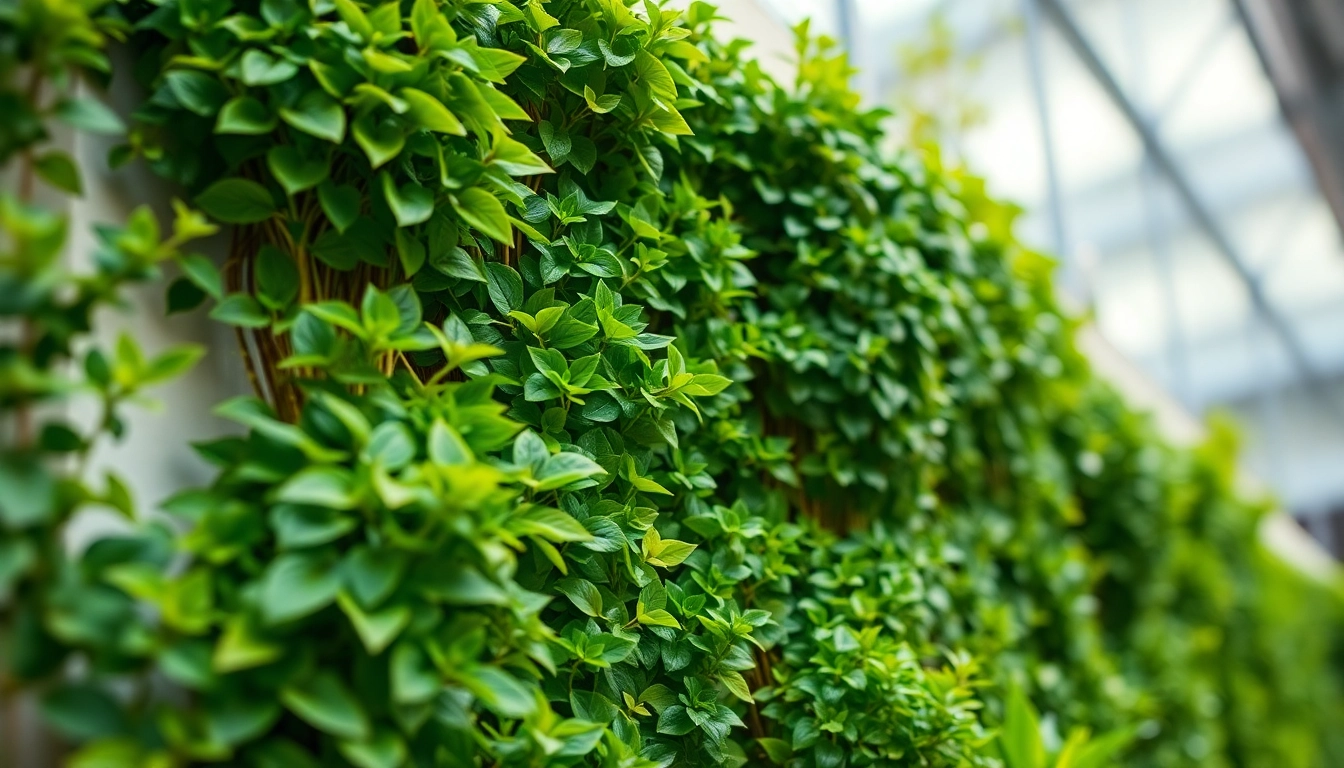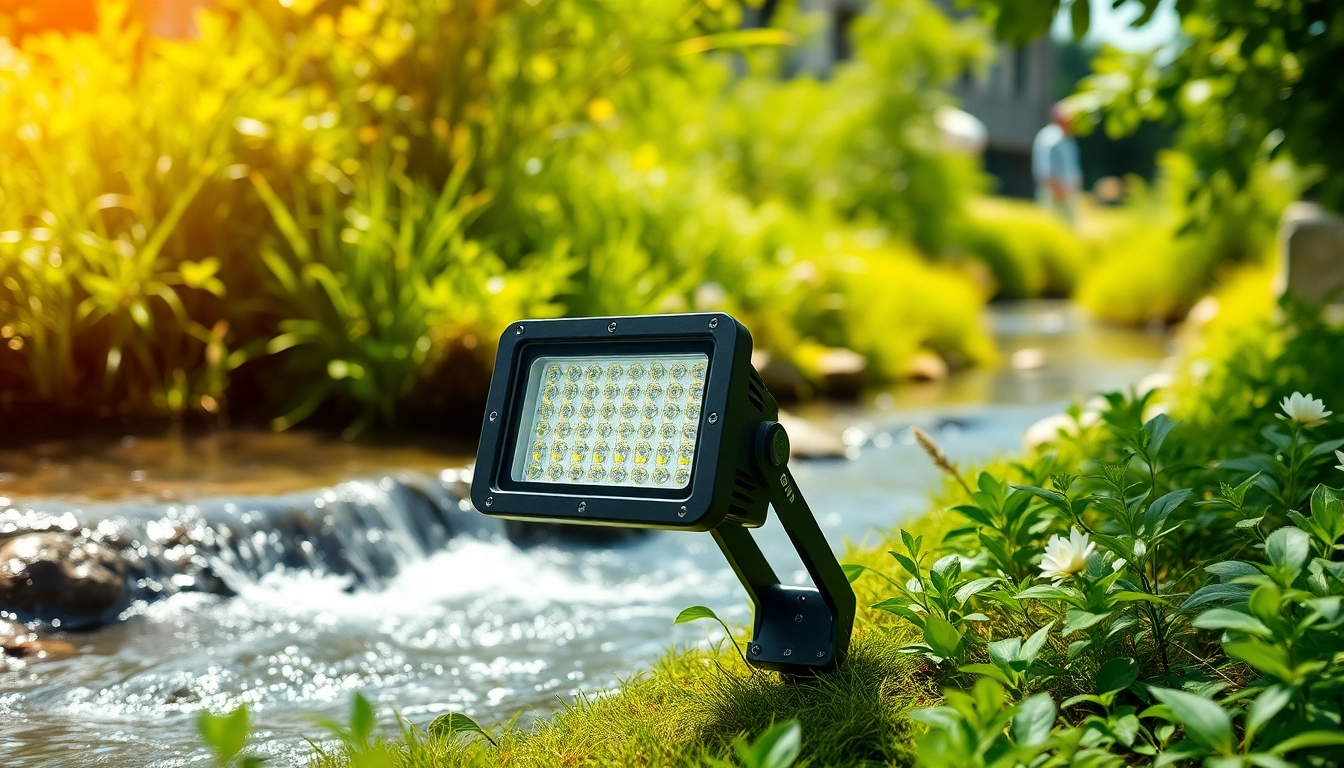Introduction to Vertikale Gärten
As urbanization increases and green spaces diminish, the concept of vertical gardening, or vertikale Gärten, has gained significant traction among gardening enthusiasts and city dwellers alike. This innovative gardening method allows individuals to cultivate their love for plants while maximizing limited space. In this guide, we delve into the essentials of vertical gardening, exploring its definition, benefits, and how to get started.
What Are Vertikale Gärten?
Vertikale Gärten, or vertical gardens, are systems designed to grow plants vertically by utilizing walls, fences, and other structures instead of traditional horizontal garden beds. This gardening style can encompass a variety of forms, from individual hanging pots to elaborate living walls composed of various plant species. They can range from purely decorative arrangements to more functional constructions, like edible gardens that bring fresh herbs and vegetables into urban environments.
Benefits of Vertical Gardening
The advantages of vertical gardening extend well beyond beautification. Here are several key benefits:
- Space Efficiency: By employing vertical space, you can create a garden where none existed, perfect for apartments or small yards.
- Improved Air Quality: Plants are natural air purifiers, absorbing toxins and producing oxygen, which is especially beneficial in densely populated areas.
- Enhanced Aesthetics: A vertical garden can transform dull walls into vibrant displays of color, making your space feel alive and engaging.
- Thermal Insulation: Green walls can help regulate temperature, reducing heating and cooling costs in your home.
- Accessibility: Vertical gardens are often easier to maintain for people with mobility issues, as they can reach plants without kneeling or bending down.
Getting Started: What You Need
To embark on your vertical gardening journey, you will need a few essential materials:
- Support Structure: This can be trellises, frames, or wall-mounted systems designed to hold the plants and soil.
- Soil and Growing Medium: Choose a lightweight potting mix or specially formulated soil for vertical gardening that provides good drainage.
- Plants: Select species that thrive in vertical arrangements—more on this in the next section.
- Watering System: Consider how you will water your vertical garden; drip irrigation or watering cans are popular options.
- Tools: Basic gardening tools such as scissors, pruning shears, and gloves will be helpful throughout your gardening experience.
Choosing the Right Plants
Choosing the appropriate plants for your vertical garden is crucial for its success. Here’s an overview of what to consider when selecting plants for these unique gardening solutions.
Best Plants for Vertikale Gärten
Selecting plants that thrive in vertical conditions is essential for a flourishing garden. Here are some of the best options:
- Herbs: Varieties like basil, thyme, and mint are not only easy to manage but also provide culinary benefits.
- Succulents: These drought-resistant plants, such as hens-and-chicks and sedum, offer diverse textures and colors.
- Flowering Plants: Annuals like petunias and pansies can enhance aesthetics, adding bursts of color throughout the seasons.
- Vegetables: Compact varieties of tomatoes, peppers, or strawberries can flourish in vertical gardens, providing fresh produce right at your doorstep.
- Foliage Plants: Plants like ferns and philodendrons are ideal for creating lush, green backdrops.
Seasonal Planting Considerations
Understanding your local climate and seasonality is vital for successful vertical gardening. Planting schedules vary according to region, so research the best times to sow seeds or transplant seedlings in your area. In temperate zones, spring is often the optimal planting season, while in tropical climates, year-round planting is feasible. Be mindful of seasonal rotations, opting for plants that flourish in your given season.
Maintenance Tips for Healthier Plants
Maintaining a vertical garden requires diligence and a few best practices:
- Regular Watering: The vertical arrangement may necessitate more frequent watering as soil can dry out faster. A consistent watering schedule is essential.
- Fertilization: Using a balanced fertilizer can promote healthy growth, especially for fruiting plants.
- Pruning: Regularly prune your plants to encourage new growth and to prevent overcrowding.
- Pest Monitoring: Stay vigilant for pests and diseases; prompt identification can save your plants from significant damage.
Designing Your Vertical Garden
Creating an aesthetically pleasing and functional vertical garden involves careful planning and design. Here are aspects to consider while designing.
Effective Vertical Garden Layouts
Layout is paramount when your garden’s vertical. You may choose from various arrangements:
- Grid Pattern: An organized approach that lends itself well to most plants; perfect for small herbs and flowers.
- Asymmetrical Designs: Offers a more casual aesthetic; can be visually dynamic and engaging.
- Column Gardens: Utilize cylindrical structures to grow plants that creep upwards; ideal for vines.
- Living Walls: An intricate design involving various plant species that can become a focal point of any space.
Incorporating Color and Texture
Incorporating a diverse palette of colors and textures can enhance the visual effect of your vertical garden. Mix flowering plants with lush foliage to create depth and interest. Consider contrasting leaf shapes and sizes, such as pairing spiky succulents with soft, trailing vines to achieve a dynamic look.
Using Vertical Space Efficiently
Make the most of limited vertical real estate by utilizing all available spaces, not only at eye level but also higher up. Hanging planters and pocket systems can now extend your gardening area significantly. Additionally, consider integration with architectural elements like railings and fences to create a seamless flow between your plants and surroundings.
Common Challenges and Solutions
Like any gardening endeavor, vertical gardening comes with its own set of challenges. However, with proactive strategies, you can mitigate these issues effectively.
Addressing Pest Issues
Pests can invade any garden, vertical or otherwise. Regular monitoring is key. Establish a routine to inspect your plants, especially the undersides of leaves, where pests often hide. Utilize organic pest control methods like neem oil or insecticidal soap, focusing on prevention strategies like healthy plant care and selection of pest-resistant species.
Watering Techniques for Vertikale Gärten
Watering can be tricky due to gravity in vertical gardens. Factors like plant size, type, and climate will dictate your watering frequency. Implementing a drip irrigation system is often the most efficient option, allowing precise water delivery while conserving resources. For smaller setups, self-watering containers can significantly reduce maintenance.
Seasonal Care and Upkeep
Sooner or later, every vertical gardener will face the change of seasons. Embrace it instead of battling it. As winter approaches, consider protecting delicate plants from frost with seasonal logistics like wrapping them or relocating them indoors. In spring, prepare for growth by adding fresh soil and nutrients to bolster your plants after their dormant period.
Examples and Inspiration
There’s no shortage of inspiration for creating unique and beautiful vertical gardens. The following examples showcase successful implementations and ideas to emulate.
Showcasing Iconic Vertikale Gärten
Throughout the world, several notable vertical gardens have captivated the imagination:
- Le Mur Végétal: This iconic living wall in Paris showcases a diverse array of flora while enhancing the city’s urban landscape.
- One Central Park: Located in Sydney, Australia, this architectural marvel features vertical gardens incorporated into its design, blurring the lines between nature and urban life.
- The CaixaForum: In Madrid, this stunning cultural center boasts a vertical garden designed by famed botanist Patrick Blanc.
DIY Vertical Garden Projects to Try
For those looking to start their vertical gardening adventure, here are some exciting DIY project ideas:
- Pallet Garden: Repurpose old wooden pallets by attaching them to a wall and filling them with soil and plants for a rustic vertical garden.
- Hanging Bottle Garden: Transform plastic bottles into hanging pots to create an eco-friendly vertical arrangement.
- Gutter Garden: Old rain gutters can be transformed into planters mounted horizontally or vertically for herbs and flowers.
Insights from Professional Gardeners
Consulting with professionals often provides invaluable wisdom. Here are a few tips from experienced vertical gardeners:
- “Start small and learn to appreciate the growing process; vertical gardening is a journey.” – Marissa, Landscape Designer
- “Don’t underestimate the importance of good drainage. Over-watering is one of the most common mistakes.” – James, Urban Gardener
- “Experiment with different plant combinations to discover what works best for your specific space and climate.” – Lena, Floral Designer


